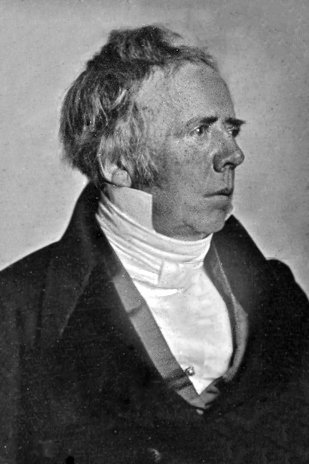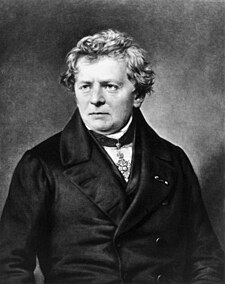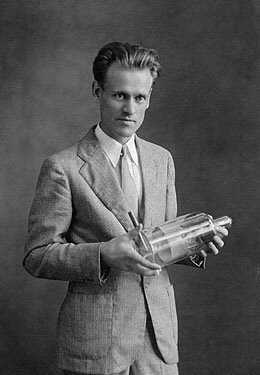Electronics Engineering
From smartphones, tablets, mechanical keyboards, gaming consoles, headphones, and computers, everything that is related with electronics engineering all came from the development of the electricity, which is primarily the concern of electrical engineering. Often interchanged with each other, electronics engineering and electrical engineering are different fields of study. But the two are related with each other – both involve moving electricity around a circuit to power devices and machines – yet they are different in terms of circuitry being studied.
What sets electronic circuits different from electrical circuits is its ability to make decisions, process information, and interpret a signal or instruction to perform a task. The components are usually small, using direct current (DC) voltages. On the other hand, electrical circuits simply power machines with electricity. They are almost always larger, which require alternating current (AC) voltages.
This relationship between the two tells that the histories of both are almost aligned at the start, during the development of electricity. This is why that some people who revolutionized the engineering of electric power are also part of the flourish of electronic devices and computers. Here are those famous scientist and inventors who shaped electronics and computer engineering:
William Gilbert

William Gilbert is the one coined the word electricus, while on his pioneering research on magnetism and static electricity. He is an English scientist, the most distinguished man of science in England during the reign of Queen Elizabeth I, who first to use the terms electric attraction, electric force and magnetic pole.
Benjamin Franklin


Often referred to as the Master of Electricity, Benjamin Franklin has great contributions in the field of electricity, and perhaps the most remembered is his kite experiment on a thunderstorm that proved electricity and lightning are the same. He was also able to invent the lightning rod, discover the principle of conservation of change and identify positive and negative electrical charges.
Luigi Galvani

It was Luigi Galvani who pioneered the bioelectromagnetics, with incredible work in animal electricity. His experiment with dead frog’s leg muscles has been the benchmark of electrical patterns and signal from tissues as the nerves and muscles.
Charles-Augustin de Coulomb

Charles-Augustin de Coulomb had revolutionary work in the theory of attraction and repulsion between bodies of the same and opposite electrical charge. He was able to demonstrate an inverse square law for such forces and examine perfect conductors and dielectrics.
Alessandro Volta

The inventions of Alessandro Volta have trademarked in electronics engineering, especially his battery that produced a reliable, steady current of electricity. This feat of Volta gave rise to electrochemistry, electromagnetism and the modern applications of electricity.
Hans Christian Ørsted


Hans Christian Ørsted is attributed to be the originator of the connection between electricity and magnetism. His accidental discovery proved that an electric current produces a circular magnetic field as it flows through a wire, and the findings stirred much research into electrodynamics.
André-Marie Ampère

A French mathematician and physicist, André-Marie Ampère is considered the first person to discover electromagnetism. Among his significant contributions is the Ampere’s circuital law, which relates the integrated magnetic field around a closed loop to the electric current passing through the loop.
Georg Simon Ohm

Best known for his Ohm’s Law, which implies that the current flow through a conductor is directly proportional to the potential difference (voltage) and inversely proportional to the resistance, Georg Simon Ohm had passionate work on the conductivity of metals and the behavior of electrical circuits.
Michael Faraday

Michael Faraday demonstrated significant work in static electricity. He was the first to prove that the charge only resided on the exterior of a charged conductor, and exterior charge had no influence on anything enclosed within a conductor. He laid the foundation of the classical field theory, and developed the first dynamo in the form of a copper disk rotated between the poles of a permanent magnet.
James Prescott Joule


Now familiar to engineers as the unit of energy, Joule, or James Prescott Joule discovered the law of conservation of energy and an experiment that further led to the discovery of the first law of thermodynamics. He was an English physicist with established work on the relationship between mechanical work and heat transfer.
Gustav Robert Kirchhoff

Every electronics engineer had encountered Gustav Robert Kichhoff, famous for the Kirchhoff’s Law. He was a German physicist that helped increase the understanding of electrical circuits, with laws of thermochemistry and thermal emission named after him apart from circuit theory. Kirchhoff was also responsible for using mathematics to understand the science of physics.
Sir Charles Wheatstone

Solely responsible for the device called Wheatstone bridge, Sir Charles Wheatstone was an English physicist who experimented on the measurement of the speed of electricity in a conductor using a revolving mirror. The device he developed can accurately measure electrical resistance now used in most laboratories. He also patented an early telegraph.
James Clerk Maxwell

It was James Clerk Maxell who first told that electricity and magnetism are actually, at the deepest level, the same force – the electromagnetic force. He produced equations called the Maxwell’s Equations that is perhaps his greatest work.
Heinrich Rudolph Hertz

A German physicist, Heinrich Rudolf Hertz was the first to satisfactorily demonstrate the existence of electromagnetic radiation waves. He did this by building an apparatus to produce and detect them. Later, his discovery was used in the flourish of radio waves as a medium in communication and broadcasting.
Thomas Alva Edison

With a record of 1,093 patents which comprise key and minor innovations, Thomas Alva Edison is perhaps the most celebrated inventor in American history. Among his early inventions include the automatic telegraph repeater, when sent telegraph signals between unmanned stations but was never patented; the electric vote recorder, Edison’s first patent; and the quadruplex telegraph, which is a system capable of sending two messages simultaneously in each direction on the same wire. Later, he developed the carbon telephone, his own system for electricity distribution, and the wireless telegraph, among others.
Nikola Tesla

This underrated genius named Nikola Tesla invented the alternating-current generator, the transformer, and he high voltage coil of the picture tube. He also developed an oscillator that generated half a million volts and a wireless world broadcasting tower. Tesla also worked on rotary engines, microwaves, radars and loudspeakers. With all this significant engineering work, he never got the glory he deserved during his time because he was thought to be a madman.
Guglielmo Marconi

Guglielmo Marconi is an Italian inventor and engineer who developed the first successful long-distance wireless telegraph. He broadcasted the first transatlantic radio signal, which attained him partly the Nobel Prize in Physics.
John Ambrose Fleming


The inventor of the oscillation diode valve or vacuum tube, John Ambrose Fleming is the one who set the benchmark for modern electronics, which why he is regarded as the father of modern electronics. He enabled the first wireless sets with a reasonable performance to be manufactured.
Lee De Forest


It was Lee De Forest who invented the Audion vacuum tube, which made live radio broadcasting possible before the invention of the transistor. It is now the key component in all radio, telephone, radar, television and computer systems. He had more than 300 patents.
Walter Schottky


A German physicist who laid work in solid-state physics and electronics, Walter Schottky discovered an irregularity in the emission of thermions in a vacuum tube, now known as the Schottky effect. He also developed the screen-grid tube and the tetrode.
Edwin Howard Armstrong

Best credited for the invention of the frequency-modulated radio, Edwin Howard Armstrong also has two other key innovations, which are regeneration and superheterodyning.
Harold Stephen Black

Harold Stephen Black is an American electrical engineer who laid the negative-feedback principle now widely applied in electronics. He worked with the Western Electric Company and Bell Telephone Laboratories. He devised the negative-feedback amplifier while trying to find a way to reduce amplifier distortion.
Philo Taylor Farnsworth

Philo Taylor Fransworth is the man who invented the electronic television, at only age 21. He did this by smoking a glass slide with carbon and scratched a single line on it, and placed it on a carbon arc projector and shone onto the photocathode of the first camera tube.
William B. Shockley


Nobel Prize for Physics winner William B. Shockley was responsible for the development of the transistor, which is one of the greatest achievements in technological history. He worked on semiconductor to control and amplify electronic signals, with John Bardeen and Walter Brattain. They developed the point-contact transistor, and later on, the junction transistor.
Walter H. Brattain

Walter H. Brattain shared the Nobel Prize for Physics in 1956 with William Shockley and John Bardeen for the investigation of the properties of semiconductors and for the development of the transistor.
John Bardeen


One of the Nobel Prize for Physics trio for their invention of the transistor, John Bardeen won the same award in 1972 for the theory of superconductivity. He focused on the electrical conduction in semiconductors and metals, and surface properties of semiconductors.













